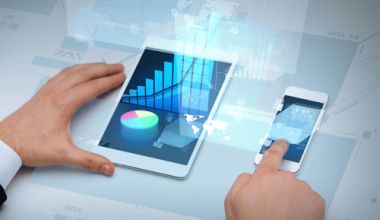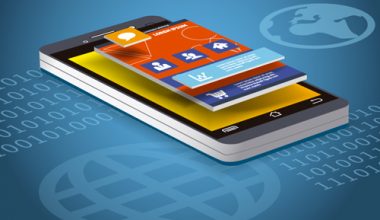Let me tell you a story. Once upon a time, there was a very rich, very clever man. He got up on a big stage and held up a new kind of computer. It was flat, and it didn’t have a keyboard. This very rich, very clever man then tried to convince a bunch of reporters that in five years this flat, keyboardless computer would be the most popular kind of computer in the country. Some of them even believed him.
The year was 2000. The man’s name was Bill Gates.
That year at Comdex, which at the time was the biggest technology trade show on the calendar, Microsoft unveiled something it called a Tablet PC. Just for good measure, the company unveiled it again at Comdex in 2001. But it never particularly caught on, because who wants a computer that’s basically an underpowered netbook without a keyboard? The Tablet PC was much like a piece of paper, except it was heavier and more expensive and it broke when you dropped it.
Now Apple is offering us another tablet PC: the iPad. We didn’t want one then. Why would we want one now?
The tough thing about writing about Apple products is that they come with a lot of hype wrapped around them. The other tough thing about writing about Apple products is that sometimes the hype is true. So let’s scrape the Vaseline off the lens and figure out what exactly we’re looking at.
Brass tacks: Apple took a computer, chopped off the keyboard and squashed it flat. It’s reasonably powerful for its size. Nobody has independently benchmarked the new house-made 1-gigahertz A4 processor that powers it, but it never once stuttered in the demos, so let’s just say it’s somewhere between an iPhone and a netbook — toward the netbook end — and more than sufficient unto the day. The iPad is thin: half an inch (1.25 cm) at its thickest. It’s light: 1.5 lb. (680 g), half of what a MacBook Air weighs. It runs a scaled-up version of the iPhone operating system we know and love or at least tolerate. To make up for the lack of a keyboard or mouse, the display is a lovely touchscreen that’s so superbright and supercrisp that it looks bigger than its real dimensions — 9.7 in. (about 25 cm) diagonally. The iPad can cost as little as $499 (with 16 gigabytes of memory) or as much as $829 (with 64 gigabytes, plus 3G).
The iPad does a lot — Web browsing, e-mail, photos, music, movies, games, word processing, spreadsheets, presentations, e-books — but you’ll notice that it doesn’t do anything your other devices don’t, and in many cases your other devices do those things better. The difference lies in what you can do with the iPad. You can pick it up. You can rest it in your lap. You can pass it around. You can leave it on a coffee table. You can tuck it in a bag. You can one-hand it while reading on a train.
Now do you want it? Of course you do. It’s all right. The feelings you’re having are perfectly natural.
Back to the Future
Steve Jobs didn’t invent the tablet computer. In the past 10 years, practically every serious PC company has shipped one. Microsoft CEO Steve Ballmer, a man impervious to the lessons of history, arrived at the Consumer Electronics Show (the Comdex de nos jours) in January waving yet another Windows tablet, this one made by Hewlett-Packard. But nobody has ever gotten the marketplace to pay attention. The tablet computer is like a siren that calls seductively to computer engineers, only to wreck them fatally on the stony coast of our total lack of interest.
But Jobs likes nothing better than frolicking in the graveyard of other companies’ dead products. Digital music players had been around for years before Apple made the iPod. When it comes to finally making the tablet computer work, Apple has a few weapons those other companies don’t have. It has world-beating displays. It has plenty of expertise in low-power engineering; the iPad’s specs say it can do 10 hours of Web surfing on one charge. More important, to make up for the absence of a keyboard, Apple has its much patented multitouch technology. The attempts of other companies to emulate multitouch are either funny or sad, depending on your temperament, but they are always futile.
See the top iPhone applications.
Most important, Apple’s engineers know something those other companies don’t: form has trumped function. You can load up a tablet with horsepower and extra features till it can do your taxes and lick the stamp, but if it’s not instantly obvious how to use those features without a manual — and if you don’t look good using them — nobody cares. The iPad isn’t wildly feature-rich. It doesn’t run Flash, and the only browser it runs is Safari. Like the iPhone, it can’t multitask, and it doesn’t appear to have a serious file-handling system. I’ve tried its much ballyhooed full-size virtual keyboard, and it feels like typing with frostbite. It doesn’t even have a damn camera. But you will care about it, because whoever designed its graceful lines and intuitive interface cared about you.
Moreover, the iPad is merely the tangible component of a much larger device, an entire Internet ecosystem that extends out to the horizon in every direction. Other companies simply cannot match Apple’s skill in constructing media pipelines for its products. The iPad is launching into the teeth of a storm of competition: there’s a tablet shipping this month called (unfortunately) the JooJoo that is physically the iPad’s rival, and Sony, Dell, Acer, Asus, Lenovo and (undaunted) Microsoft are all said to have next-gen tablets in the works, to say nothing of the inevitable swarm of Chinese knockoffs. But nobody anywhere does delivery like Apple, and a tablet is only as good as the stuff you can put on it.
Apple already took this hill with the iPhone. The App Store alone has piled up 150,000 offerings in the space of not quite two years, turning the iPhone into a mature mobile-gaming platform to rival Nintendo’s DS. The iPad will hold that hill and erect cruelly unassailable fortifications on it. The most interesting steel-cage match this year will be Apple and the iPad vs. Amazon and the Kindle in the e-bookselling arena. I’ve seen what books look like on the iPad, and I’ve seen Apple’s e-bookstore. The iPad is going to fold, mutilate and spindle the Kindle.
Introducing the Home Computer
But to say the iPad is revolutionary isn’t quite right. There’s nothing like it out there, so there’s no regime to change. One of the things that makes Apple unique is that it never holds focus groups. It doesn’t ask people what they want; it tells them what they’re going to want next. Where Microsoft likes to enter established markets and take them over by brute force, Apple works by creating new niches and dominating them from the get-go.
Nobody — not even Jobs, by his own admission — is sure what consumers will use the iPad for, but I’m guessing it will be the first true home computer. Conventional PCs live in studies; laptops make brief, furtive forays into the living room. The iPad will become the first whole-house computer, shared among an entire family, passed from hand to hand, roaming freely from living room to kitchen to bedroom to — look, it’s going to happen — bathroom, at ease everywhere, tethered to nothing. It’s not a revolution, but it’s a real change, the kind of change you notice.
If I have a beef with the iPad, it’s that while it’s a lovely device for consuming content, it doesn’t do much to facilitate its creation. The computer is the greatest all-purpose creativity tool since the pen. It put a music studio, a movie studio, a darkroom and a publishing house on everybody’s desk. The iPad shifts the emphasis from creating content to merely absorbing and manipulating it. It mutes you, turns you back into a passive consumer of other people’s masterpieces. In that sense, it’s a step backward. Not much of a fairy-tale ending. Except for the people who are selling content.
Resource:
http://www.time.com/time/business/article/0,8599,1976932,00.html?xid=rss-topstories




Comments are closed.